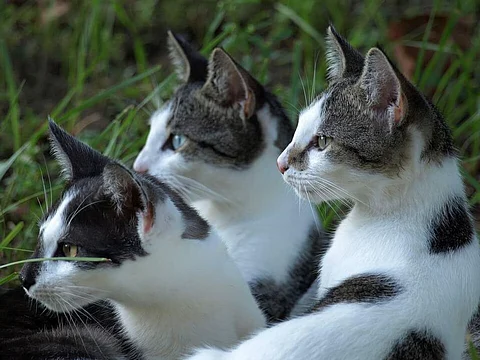
- Home
- न्यूजग्राम
- India
- World
- Politics
- Entertainment
- Culture
- Lifestyle
- Economy
- Sports
- Sp. Coverage
- Misc.
- NewsGram Exclusive
- Jobs / Internships

June 30, 2017: A new DNA study published in Ecology and Evolution infers how cats have followed the development of Western civilization. This process was helped by an attempt in the 18th century, creating the lovable tamed short-haired or "tabby" cat.
While the origin of the domesticated cat is still a mystery, it seems that the manner of becoming pets took a long time. It also appears, because cats are independent, territorial and, antisocial, they were not so easy to tame as compared to the co-operative pack of the wolf.
Cats lived around humans for many centuries before dropping to the lure of the fire and the cushion and coming in from the cold behaviour to become true companions to humans.
The cat found in Cyprus resembles the Neolithic period of around 10,000 BC to 4,000 BC and the agricultural revolution. This was when people were starting to settle down and become farmers instead of carrying on the nomadic hunter-gatherer existence.
An earlier DNA study of other ancient remains tells that domestic cats first emerged in the land at the eastern end of the Mediterranean where some of the first human civilizations emerged.
The authors of the new study examined DNA taken from bones and teeth of ancient cat remains to track the spread of the domestic cat. They also studied samples from the skin and hair of mummified Egyptian cats.
They found that all modern cats have ancestors among the Near Eastern and Egyptian cats, although the contributions of these two groups to the gene pool of today's cats probably happened at different times. The DNA study suggests domestic cats spread out over a period of around 1,300 years to the 5th century AD, with remains recorded in Bulgaria, Turkey and Jordan.
The DNA study suggests domestic cats spread out over a period of around 1,300 years to the 5th century AD, with remains recorded in Bulgaria, Turkey and Jordan.
Another striking finding is that domestic cats from earlier times, when strolled with humans to new parts of the world mated with local Wildcats and spread their genes through the population. And, in the process, they forever changed the gene of cats in the area.
– by Naina Mishra of Newsgram. Twitter: @Nainamishr94
